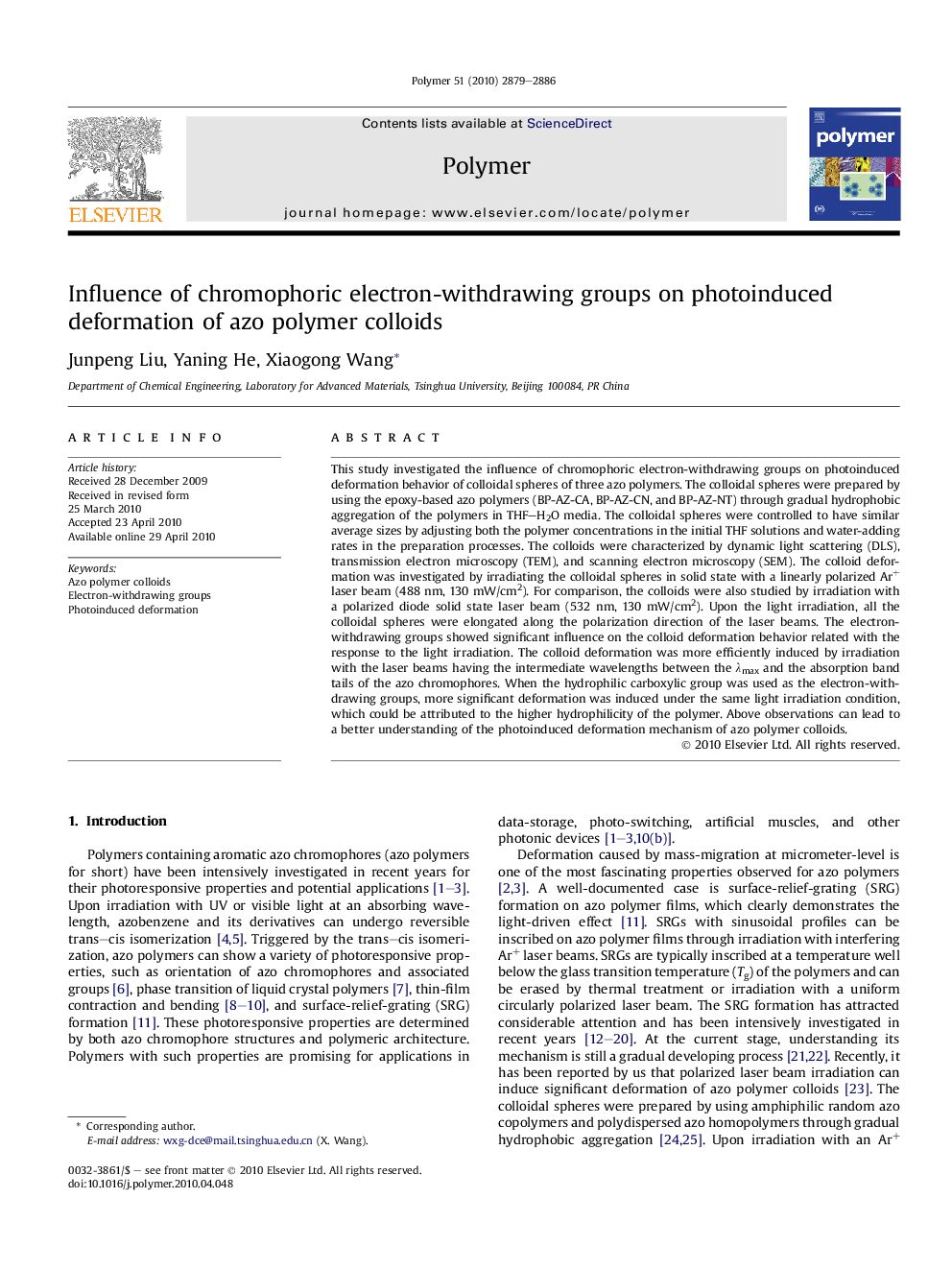| Article ID | Journal | Published Year | Pages | File Type |
|---|---|---|---|---|
| 5184886 | Polymer | 2010 | 8 Pages |
This study investigated the influence of chromophoric electron-withdrawing groups on photoinduced deformation behavior of colloidal spheres of three azo polymers. The colloidal spheres were prepared by using the epoxy-based azo polymers (BP-AZ-CA, BP-AZ-CN, and BP-AZ-NT) through gradual hydrophobic aggregation of the polymers in THF-H2O media. The colloidal spheres were controlled to have similar average sizes by adjusting both the polymer concentrations in the initial THF solutions and water-adding rates in the preparation processes. The colloids were characterized by dynamic light scattering (DLS), transmission electron microscopy (TEM), and scanning electron microscopy (SEM). The colloid deformation was investigated by irradiating the colloidal spheres in solid state with a linearly polarized Ar+ laser beam (488 nm, 130 mW/cm2). For comparison, the colloids were also studied by irradiation with a polarized diode solid state laser beam (532 nm, 130 mW/cm2). Upon the light irradiation, all the colloidal spheres were elongated along the polarization direction of the laser beams. The electron-withdrawing groups showed significant influence on the colloid deformation behavior related with the response to the light irradiation. The colloid deformation was more efficiently induced by irradiation with the laser beams having the intermediate wavelengths between the λmax and the absorption band tails of the azo chromophores. When the hydrophilic carboxylic group was used as the electron-withdrawing groups, more significant deformation was induced under the same light irradiation condition, which could be attributed to the higher hydrophilicity of the polymer. Above observations can lead to a better understanding of the photoinduced deformation mechanism of azo polymer colloids.
Graphical abstractDownload full-size image
